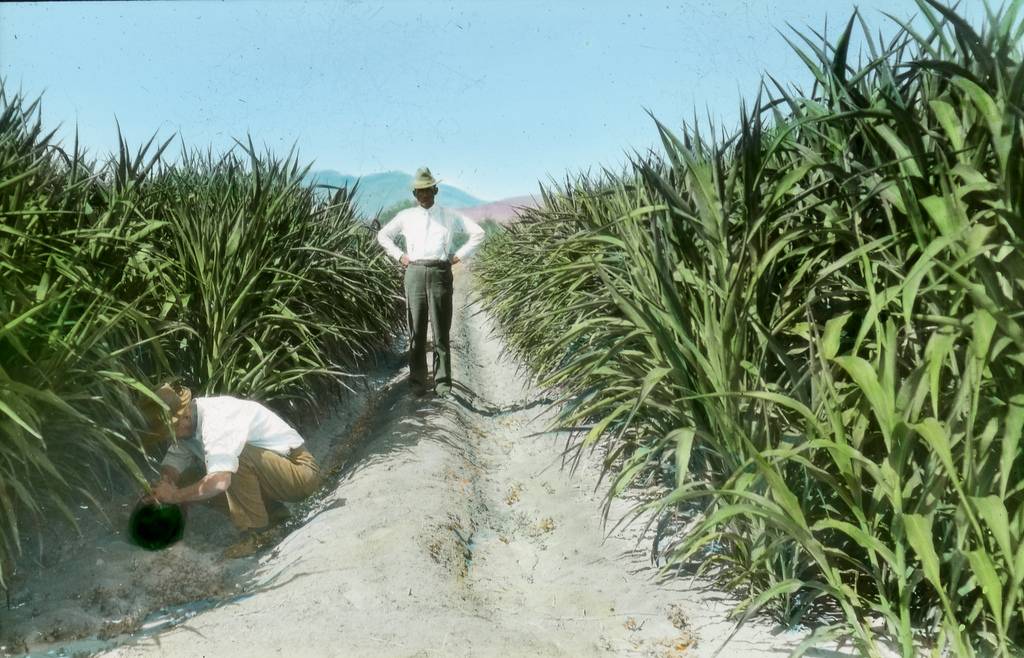
A ca. 1915 image of men raising an experimental sugar cane crop in the Salt River Valley. This Bureau of Reclamation photo documents the serious efforts once made to bring about large-scale sugar cane cultivation in the Phoenix and Yuma areas.
Who would have guessed that sugar cane and bananas were once promoted as crops that could be profitably grown in the arid Arizona desert?
According to overly-optimistic nineteenth-century Arizona newspapers, successfully cultivating such crops was not only possible, but was extremely likely. As sugar is typically grown in more temperate parts of the globe that receive at least 24 inches of rain per year and bananas require 75 to 100 inches of rain to thrive, the hot and dry Salt River Valley and greater Yuma area seem an ill-fit for sugar and banana farms. Nonetheless, Arizona’s exhibit space at the 1885 New Orleans Exposition featured Arizona-grown sugar cane, among other locally-produced crops. A February 16th, 1889 Arizona Sentinel article proclaimed the “strong and healthy ‘stand’ of… sugar cane” growing in a local farmer’s field to be “a good advertisement for [their] mild winters,” while a different article in that same paper advised readers, “the cultivation of sugar cane in [Yuma County] is simple and cheap, the cane growing luxuriantly and being easily kept clear of weeds.” Nearly two decades later, a 1915 Tombstone Epitaph article mentioned ongoing consideration of “the possibilities of molasses as a by-product from the Salt River Valley sugar cane.”
Bananas, a crop only a handful of sane individuals would propose growing in the deserts of our state, received mention as a possible cash crop for Arizona farmers, with the February 16th, 1889 Arizona Sentinel extolling Yuma County’s Mohawk Valley as being “especially adapted to fruit growing.” In addition to the standard citrus plantings found to be successful in the Phoenix and Yuma areas, the Sentinel promised, “even pineapples and bananas will grow to an advantage” in Mohawk Valley.
Of course, as is now widely known, Arizona’s harsh climate — even with the benefit of irrigation — is not conducive to raising sugar cane, bananas, coffee, or any other tropical crop. Our climate, although extreme at times, merits inclusion within the the grouping of Arizona’s 5 Cs, as does the cotton, cattle, and citrus raised under the Arizona sun. Cane, however, is nowhere to be found — despite the promises of nineteenth-century newspaper men.
